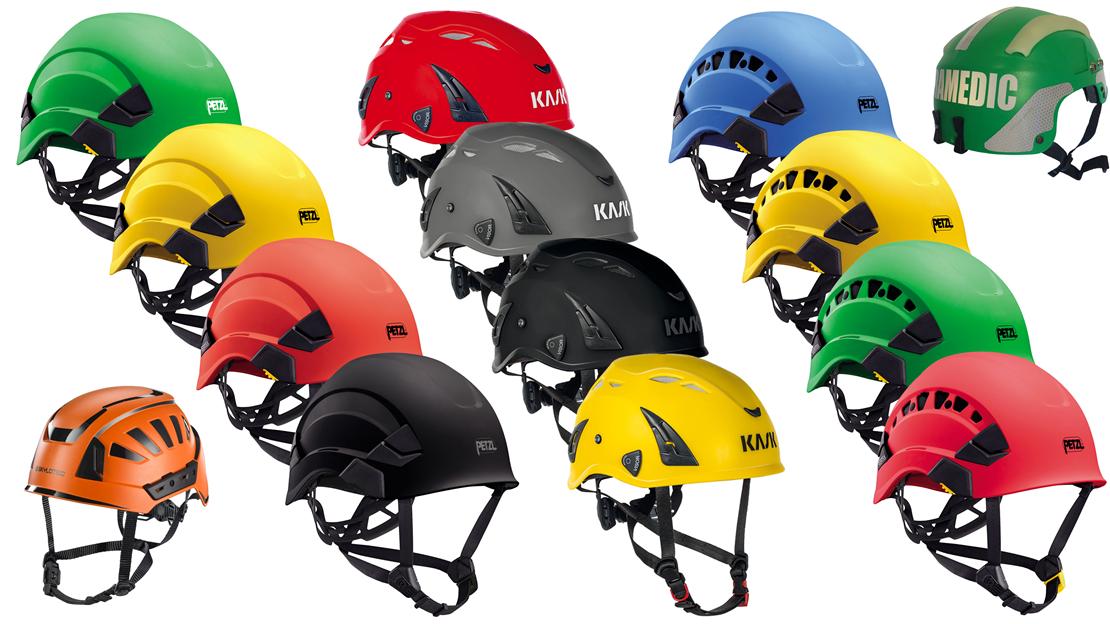
A buying guide for Helmets
The helmets use is dictated by the EN Standard. The Standard ensures that the helmet has passed all the appropriate tests for the activity in question. For example, EN 12492 - Mountaineering equipment - Helmets for mountaineers, states that the helmet must be ventilated; due to the strenuous nature of climbing / mountaineering and also have a strong chin-strap; to ensure the helmet stays on the wearer’s head in the event of a fall. EN 397 – Industrial Safety Helmets, states that the chin-strap should be weak (no more than 250 N of force = 25.5 kg of force) to prevent strangulation.
Some helmets also include addition conformity to cater for electrical protection, molten metal splash and low temperatures.
Certification
EN 397 - Industrial safety helmets.
EN 1385 - Helmets for canoeing and white-water sports.
EN 12492 - Mountaineering equipment. Helmets for mountaineers. Safety requirements and test methods.
EN 14052 - High performance industrial helmets.
EN 50365 - Electrically insulating helmets for use on low voltage installations.
With this in mind, helmets can be categorised:
- Rope access / height safety
- Ground work only
- Climbing
- Water Sports / Rescue
Climbing helmets are generally lightweight. This is achieved by the use of a thin plastic shell and EPP (expended Polypropylene) and EPS (expanded Polystyrene). The EPP and EPS absorbs the energy of an impact. Industrial helmets tend to use both construction methods. Where no EPP / EPS is used, the shell is thicker as this is designed to dissipate the energy from an impact.
The Petzl Vertex and Strato have headband adjustment wheels that adjusts the headband at the front and back of the helmet, to ensure a centred fit. Other manufacturers use just a rear adjustment which can give an uneven fit.